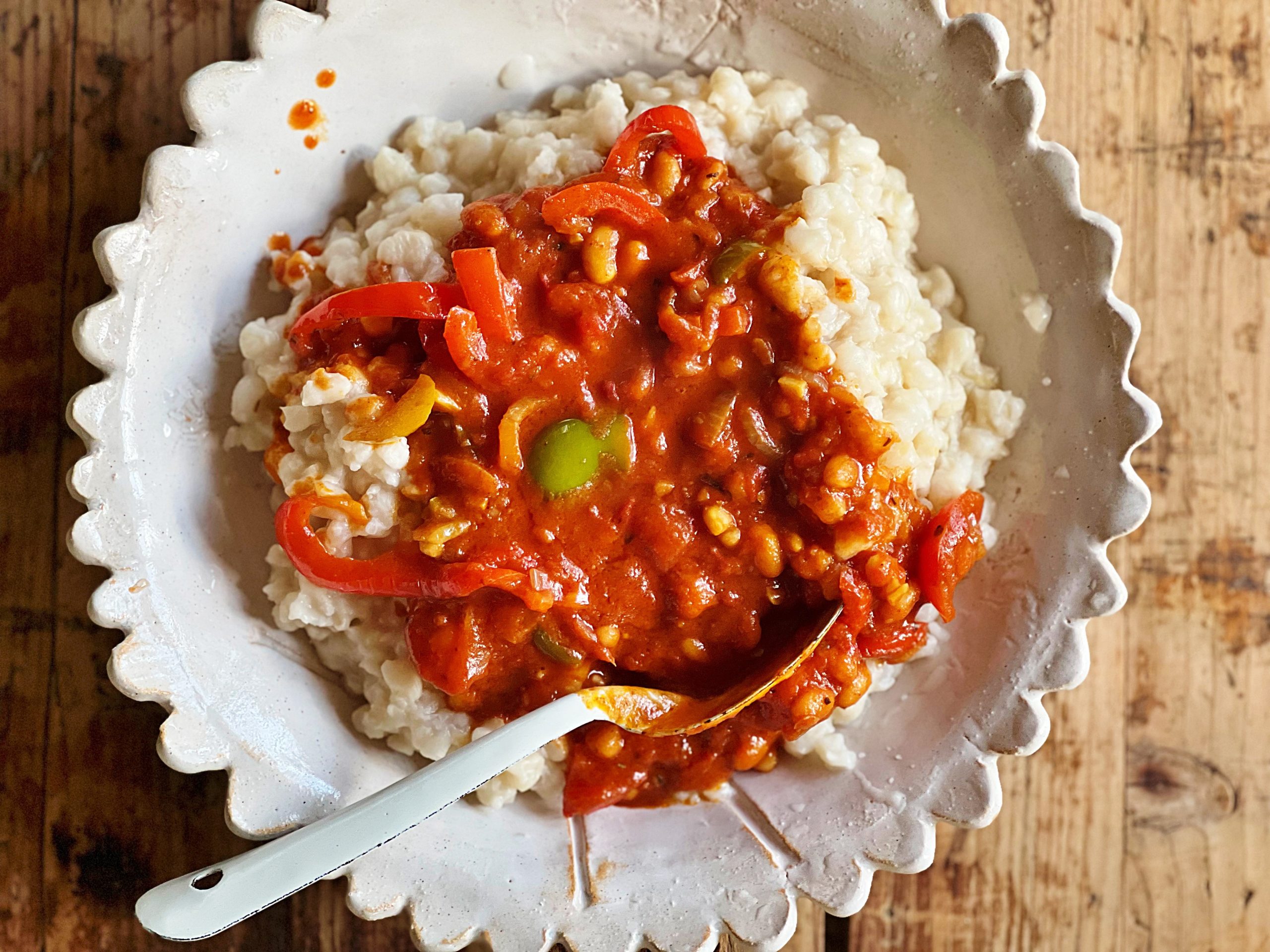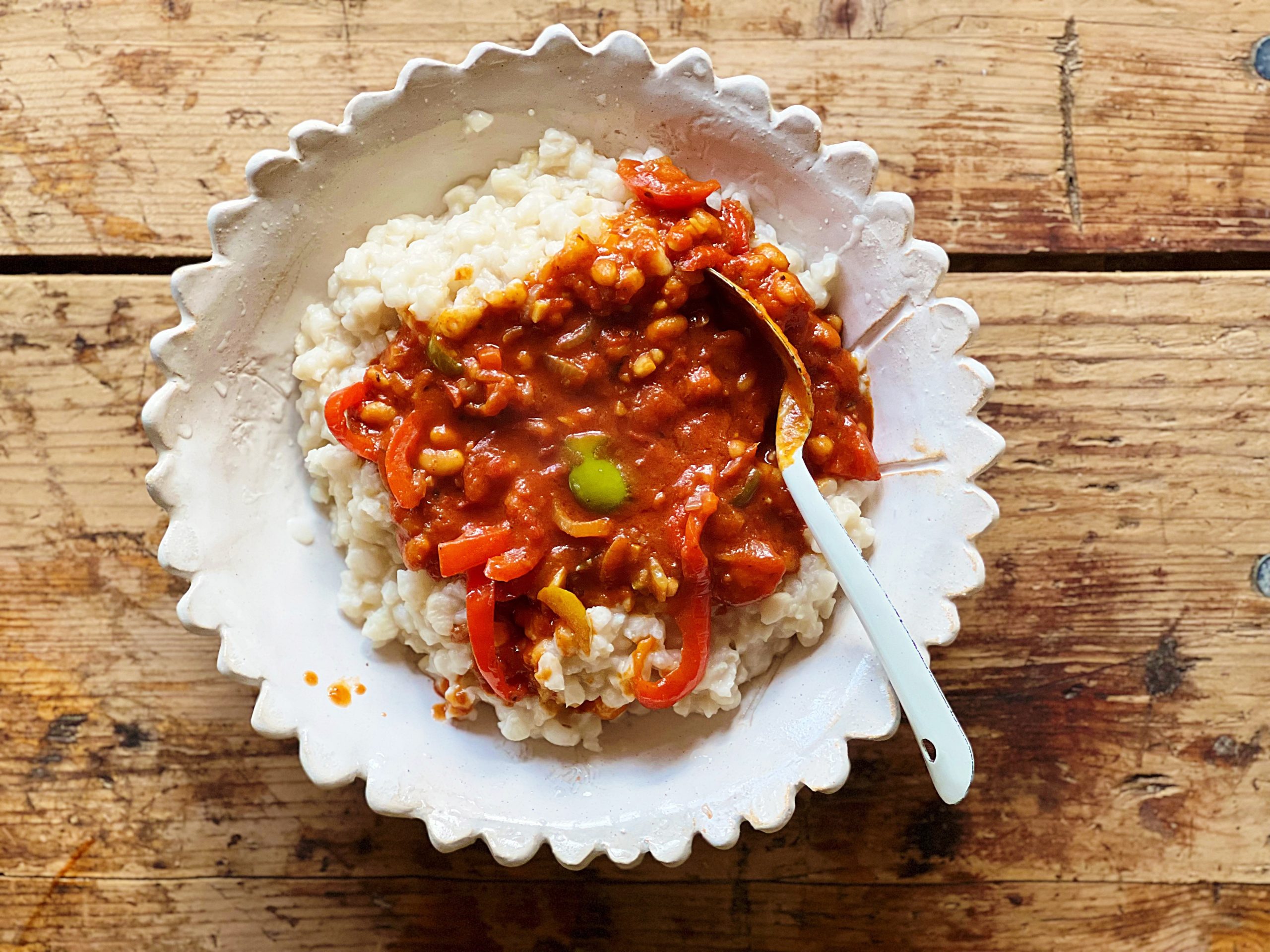
Generally, in this country, African food doesn’t get much of a look in. There are some African restaurants in my area – Kilburn, north west London – but they seem mostly deserted. Of course Africa is a massive continent; the cuisine varies from North African couscous and tagine to the Middle Eastern-influenced Egyptian cuisine of foul mesdames, from Ethiopian coffee to injera and teff.
I’ve not visited Central or West Africa so know very little about it. I did interview Nigerian food writer Yemisi Aribisala who talked about how slimy or viscous food is popular.
I’ve spent time in South Africa, Botswana (where I bought the samp for this recipe); Mozambique, which being coastal has fantastic fish and is influenced by Portuguese cuisine; and Zimbabwe, where you can taste exotic meat such as crocodile, kudu, etc, though I don’t eat meat so this is wasted on me.
Yam, a native crop, is favoured: some kinds of yam are huge; some are very slimy. Interestingly, it is prescribed for menopausal women in the West as an oestrogen-rich food.
South Africa has an amazing wine culture, which calls for matching with European-influenced food, but most South Africans eat meat-heavy meals such as braai and biltong, from the original hunter-gatherer cultures.
I’ve been digging through my store cupboards recently and cooking things I’ve collected from around the world. The samp has been lingering there since my trip to Botswana several years ago but I doubt it ever goes off. It takes a long time to cook: I soaked it for 24 hours, then cooked in the slow oven for 12 hours. To be honest it’s bland and filling. It feels like subsistence food.
Samp is a corn-based carb, originating in American Indian cuisine similar to hominy or pozole, therefore it is a New World food. I’m always amazed by how so-called traditional foods, like chilli in Indian curries or tomatoes for Italian sauces, are actually newcomer ingredients from the Americas. Indians formerly used pepper in curries rather than chillies.
You may struggle to get samp in the UK, and it’s an acquired taste, something you probably have to grow up with, like Marmite.
Chakalaka, a vegetarian dish similar to ratatouille but spicier, is a South African/Botswana favourite of mine. Some versions add curry powder and cabbage. Here’s my recipe.

Chakalaka
Ingredients
- 3 tbsp vegetable oil
- 4 peppers, mostly red and 1 green, deseeded and sliced thinly
- 2 onions, brown, sliced thinly
- 4 cloves garlic, minced
- 3 cms ginger, minced
- 1 tin tomatoes
- 3 carrots, sliced thinly into rounds
- 1 tin baked beans
- 1 tbsp piri piri (sometimes called peri peri) seasoning
Instructions
- Fry the peppers and the onion in the oil until caramelised.
- Add the garlic, ginger and tomatoes. Simmer for 10 to 15 minutes. Then add the carrots.
- Finally add the baked beans and piri piri seasoning. Cook until hot, then serve warm with samp, rice or bread.




Leave a Reply